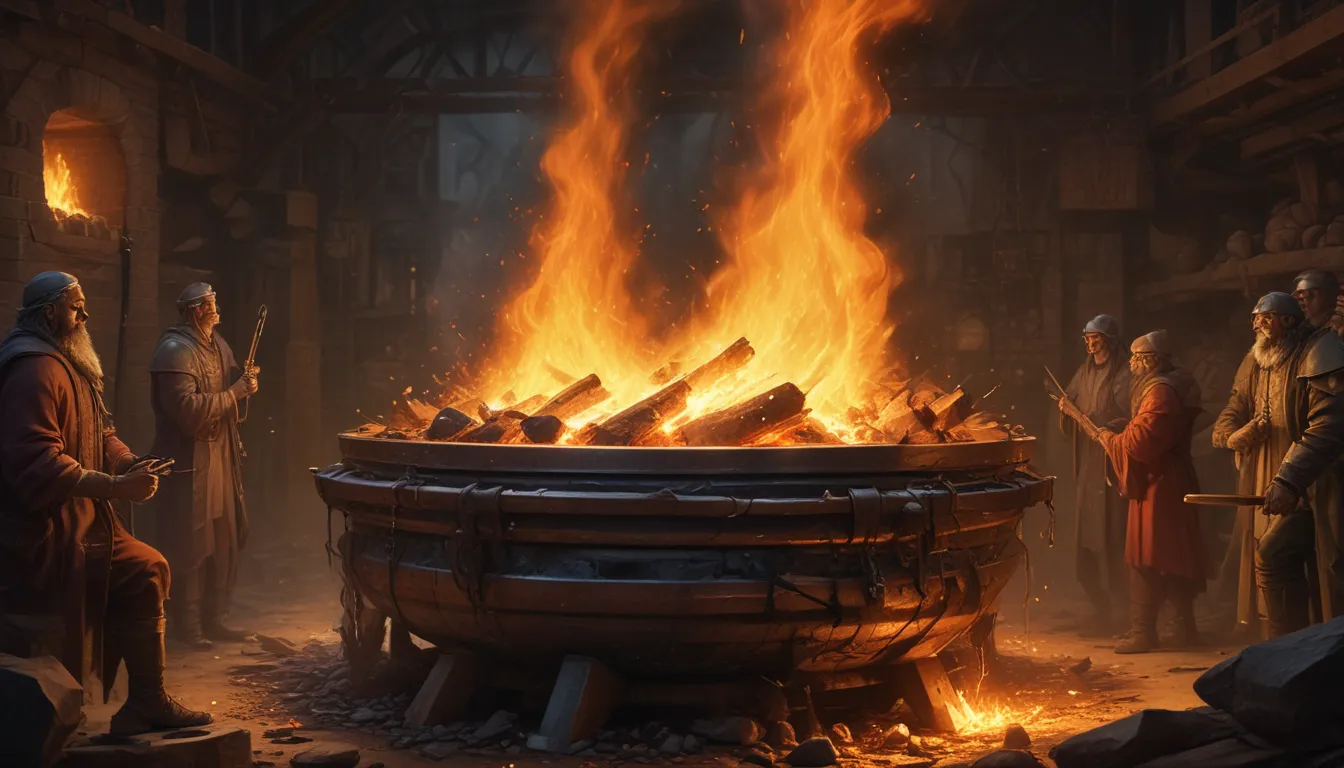A Note About Images: The images used in our articles are for illustration purposes only and may not exactly match the content. They are meant to engage readers, but the text should be relied upon for accurate information.
Are you curious about the ancient process that shaped our world and continues to be vital in modern industries? Smelting, the art of extracting and transforming metals, holds a plethora of enigmatic facts that often go unnoticed. Join us on a journey to unravel these fascinating mysteries and gain a deeper understanding of the complexities behind smelting.
The Evolution of Smelting
Smelting, a historic technique, revolutionized human civilization by extracting pure metals from ores and leading to technological advancements. This transformation marked the transition from the Stone Age to the Bronze and Iron Ages, shaping the way we live today.
Ancient Pioneers of Smelting
Ancient civilizations such as the Egyptians and Mesopotamians were pioneers in developing advanced smelting techniques. By using furnaces and bellows to achieve high temperatures, they extracted metals like copper and gold from ores, laying the foundation for modern metal production.
The Fascinating Process of Smelting
Smelting involves heating and melting metal ores to extract pure metal, separating impurities and achieving refined metals suitable for various applications. Different furnaces, from blast to electric arc furnaces, are used based on the specific requirements of the metal being processed.
The Role of Chemical Reactions in Smelting
Complex chemical reactions occur during smelting between the metal ore and the flux, a cleaning agent that removes impurities and aids in separating the desired metal. Oxygen also plays a crucial role in promoting combustion and enhancing the efficiency of the smelting process.
The Environmental Impact of Smelting
While essential for metal production, smelting can release harmful byproducts such as sulfur dioxide, carbon monoxide, and heavy metals. Proper management and control are necessary to minimize the environmental impact of these pollutants and ensure sustainable practices.
Advancements in Smelting Technology
Modern technology has significantly advanced the smelting industry, making it more efficient, sustainable, and environmentally friendly. Continuous smelting processes and the use of renewable energy sources have reduced the environmental footprint of smelting operations, paving the way for a greener future.
Smelting Beyond Metal Production
While commonly associated with metal extraction, smelting also finds applications in other industries. For instance, it is used in the glass industry to melt and refine materials for glass production, showcasing the versatility of this ancient technique.
The Role of Alloys in Smelting
Smelting can create alloys by combining different metals, resulting in materials with unique properties. Stainless steel, a blend of iron, carbon, and chromium, and bronze, an alloy of copper and tin, are examples of how smelting can produce materials with enhanced characteristics.
The Significance of Skilled Smelters
Smelting is a highly skilled craft that requires expertise in metal properties, temperature control, and equipment handling. A skilled smelter can achieve optimal results and produce high-quality metal, highlighting the importance of knowledge and precision in the smelting process.
The Continued Importance of Smelting
Despite technological advancements, smelting remains a vital process in modern society for metal production. From manufacturing automobiles to constructing buildings, the products we rely on daily often begin with the smelting of raw materials, underscoring the enduring relevance of this ancient technique.
Delve Deeper into the World of Smelting
If the enigmatic world of smelting has captured your interest, consider exploring more about the small but mighty fish that shares its name. “10 Facts About Smelts” offers a fascinating glimpse into the lives of these remarkable creatures, complementing your newfound knowledge of smelting.
Conclusion
In conclusion, smelting continues to be a captivating subject that has shaped human history and continues to influence modern industries. By unraveling the mysteries of smelting and exploring its fascinating facts, we gain a deeper appreciation for this ancient art form and its enduring impact on society.
FAQ
- What is smelting?
-
Smelting is a metallurgical process that involves extracting metals from their ores by heating and melting them to separate useful metals from impurities.
-
Which industries rely on smelting?
-
Many industries, including mining, foundries, steel production, and metal fabrication, rely on smelting for extracting and refining various metals such as iron, copper, aluminum, and gold.
-
How does smelting contribute to sustainable development?
-
Smelting plays a crucial role in recycling metals, reducing the need for raw materials, conserving energy, and decreasing the environmental impact of metal production.
-
What are some challenges faced during the smelting process?
-
Challenges include controlling temperature and composition, managing emissions and pollutants, and handling waste materials responsibly.
-
How has smelting evolved over time?
-
Advancements in technology have led to more efficient, cost-effective, and environmentally friendly smelting processes, from traditional charcoal-fired furnaces to modern electric arc furnaces.
-
Can smelting be done on a small scale?
- Yes, smelting can be done on a small scale in foundries or even at home for hobbyists, with proper safety precautions and knowledge of the process.
Your Feedback Matters
Our commitment to providing trustworthy and engaging content relies on the valuable insights and contributions of our readers. Each fact shared on our site undergoes rigorous review by our dedicated editors to ensure accuracy and reliability. Trust in our pledge to deliver high-quality, authentic information as we embark on a journey of exploration and learning together.






